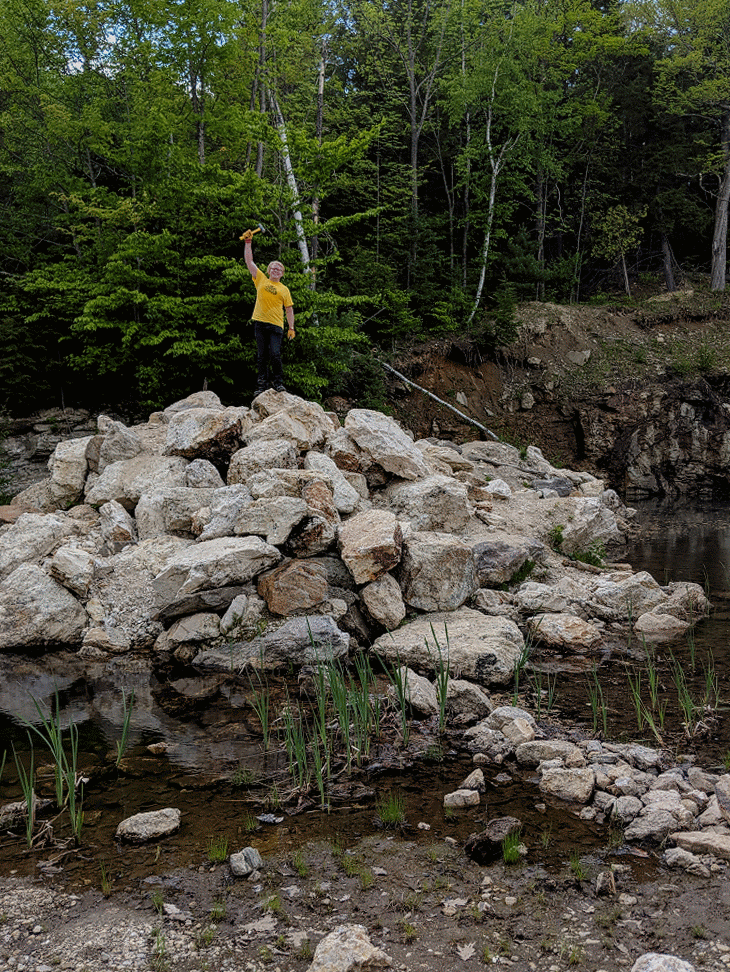“Tools of the Trade”
This section deals with the rockhounding tools suggested for most any surface, locale, environment. In another section we will deal with specialty tools that complement the following tools, but for quartz, pyrite, fossils, for example, these are the tools required. Please note that depending on the maker, some of these tools may be labeled or branded differently. The tool combo that every rockhound needs is a hammer and chisel. The technique of cracking open rock is to find a naturally occurring crevice or seam, and widen and force it open to split and separate the rock. Then find or create another crevice or seam and separate or split the rock as you work to find the crystal, or lack thereof. Another chapter describes rockhounding techniques in detail, but for every rockhounding adventure, follow these 3 rules.
- One of the useful hammers, depending on the maker, is called a drilling hammer, club hammer, hand sledge, or blacksmith hammer. This is the hammer that is used to pound the chisel into a crevice or crack as you separate rock. The face of the hammer is wider in circumference so you can squarely pound the chisel. This is the tool used with a chisel to break up rock, separate rock, and uncover pockets. *ILLUSTRATIONS OF HAMMERS HERE*
- The other hammer we recommend, depending on the maker, is called a brick layer’s hammer, a rock pick, or a pick hammer. It has a slender head, the diameter of the head closer to the diameter of a traditional hammer, for more intricate chipping, and the other end is the “claw” which is useful to pry apart stone. This smaller hammer allows for more delicate pounding of the chisel, and can be used alone with accuracy to crack away rock or stone from a rock face.
- Chisels come in different sizes, and we suggest
you carry two. The longer chisels can second in use as pry bars, to separate
slabs, pry apart rock using the longer chisel as a lever. There is a smaller
chisel that we recommend to be used with the club hammer (hand sledge) when you
are faced with a smooth face of rock. The smaller chisel carries more force
when you just need to get started breaking up rock from a fresh face.
- “Diamond Tip” – Another reason to carry two chisels is for the advantage when breaking apart a larger stone. After you are able to hammer the smaller chisel into the crevice or seam, to start separating and breaking up the rock face or outcrop, you leave that smaller chisel wedged inside the seam, and then take your larger chisel to pry apart the stone.

